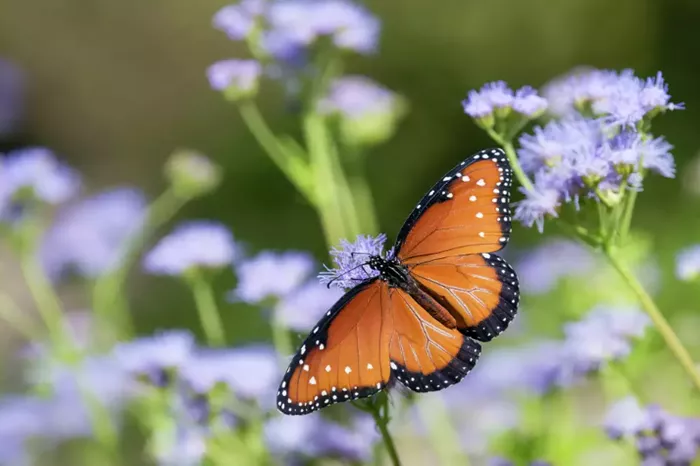Creating a Wildlife-Friendly Garden: Five Simple Steps for Fall.
In 2021, we explored the importance of native plants and creating habitats in our yards. As we move into fall, it’s not only time to plant or sow seeds but also to prepare our gardens for winter. Here are five easy steps to support migrating and resident birds, butterflies, pollinators, and soil-nurturing invertebrates.
Step 1: Plant Now
Fall is an ideal time for planting. The cooler temperatures help new plants recover gradually and allow their roots to establish. This gives them a head start for spring growth. Many native seeds require a cold period to germinate. You can achieve this by placing seeds in your fridge for a while or sowing them directly into the soil and letting nature take care of them.
Step 2: Provide Food and Cover
Native plants are the best source of food and cover for local wildlife. The more you plant, the more support you provide.
Shrubs offer excellent year-round cover. If they bear fruit, they also provide shelter from predators and a vital winter food source. In spring, shrubs can serve as nesting sites.
For example, the purple berries of American Beautyberry (Callicarpa americana) attract both wildlife and human eyes. Coralberry (Symphoricarpos orbiculatus) also produces winter berries. Its leaves are often cut by leafcutter bees for nesting material.
Buffalo Currant (Ribes aureum), a plant from the Great Plains, is an early bloomer, offering its fruit as a welcome spring treat. After rain, native sages bloom, providing food for bees and other insects.
Perennial wildflowers like Blue Mistflower (Conoclinium coelestinum), goldenrod, and Fall Aster (Symphyotrichum oblongifolium) supply nectar for butterflies. In winter, they provide shelter for insects that hibernate. If you can only plant one type of flower, consider a sunflower, which provides food and cover throughout the year.
Step 3: Reduce Fall Cleanup
Reducing your fall cleanup not only saves you work but also helps urban wildlife.
Leave the leaves! Instead of bagging them, rake them into garden beds. This action releases nutrients, retains water, and creates habitat for native insects, including butterflies and moths. This method also improves soil structure and reduces landfill waste.
Delay deadheading and trimming perennials until early spring. Birds can feed on the seeds and berries left on the stalks, while hollow stems offer winter homes for pollinators and beneficial insects.
Avoid excessive mulching. Deep mulch layers can block wildlife from accessing the soil for food and shelter.
Step 4: Plan for Next Year
Take time to read about the benefits and methods of providing habitat in your garden. Understanding these concepts will help you create a more inviting space for wildlife.
Step 5: Enjoy Fall
Spend time outdoors and enjoy the benefits of nature. While the monarch migration is nearly complete, keep an eye out for migrating and resident birds. Consider finding outdoor activities for children and people of all ages.
The potential for creating a backyard habitat is vast and limited only by your imagination.
Related topics:
- How Cities Are Integrating Native Plants into Landscaping?
- Aster Flowers Thrive Best with This Vibrant Fall Companion Plant
- Volunteers Plant Over 1,000 Trees to Boost Spokane County Conservation Area’s Ecosystem


